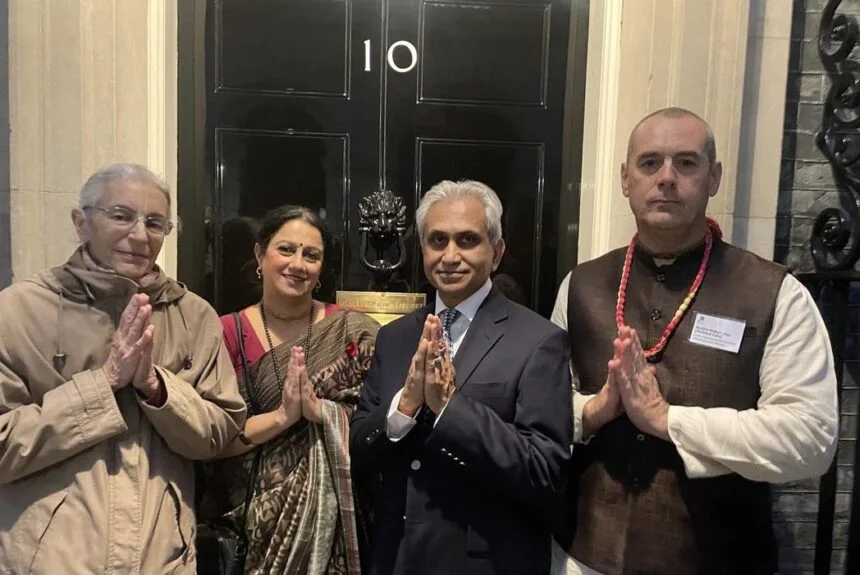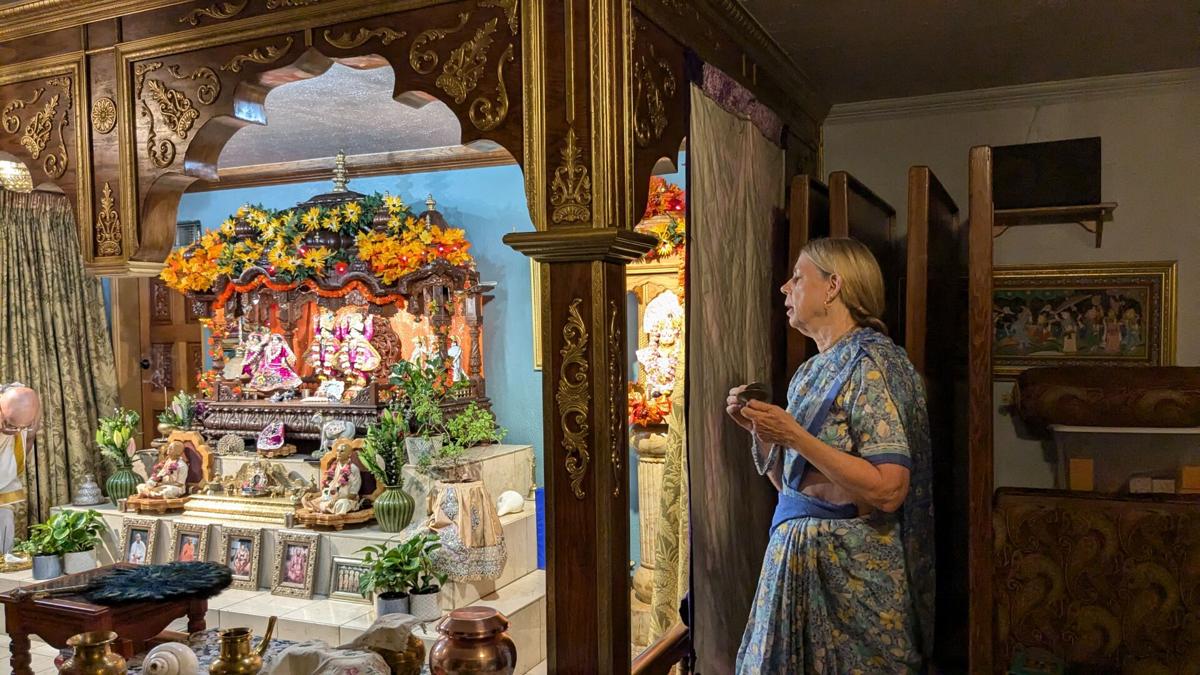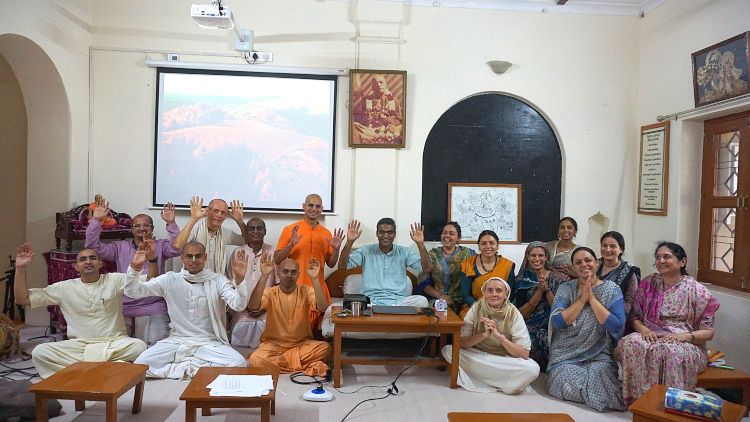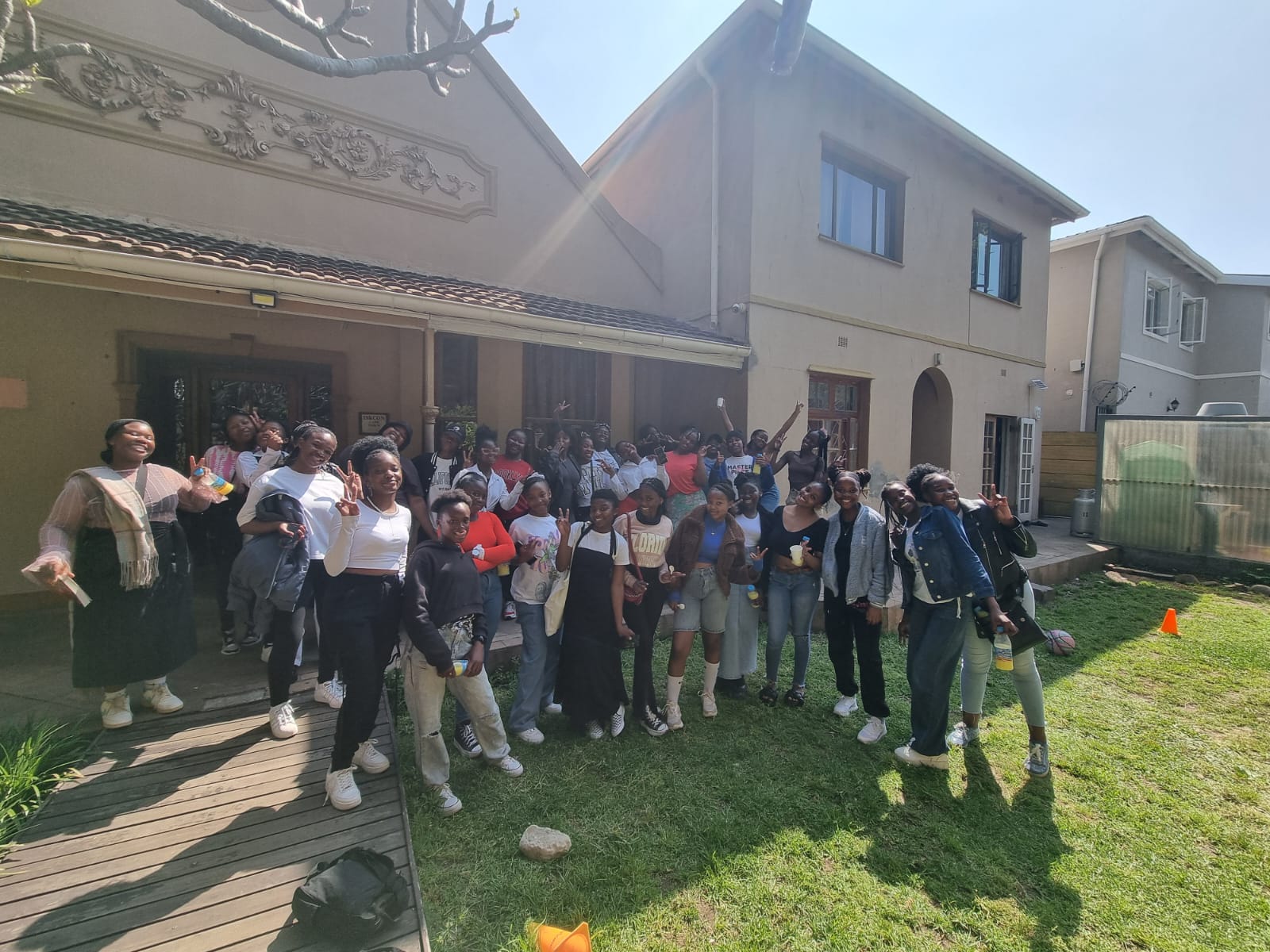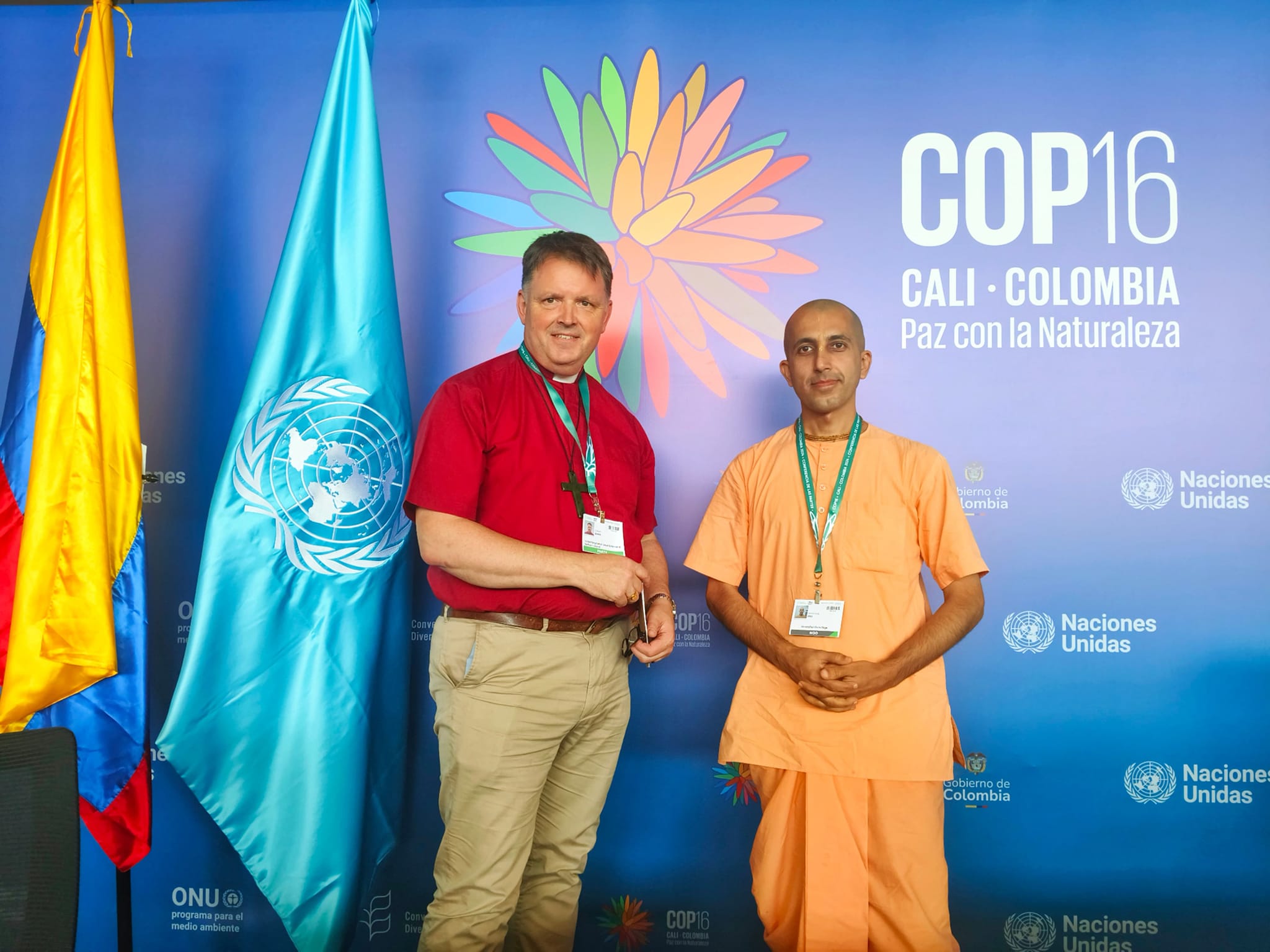GBC Zonal Configuration Marches Forward
By Kaisori Dasi | Ноя 17, 2011
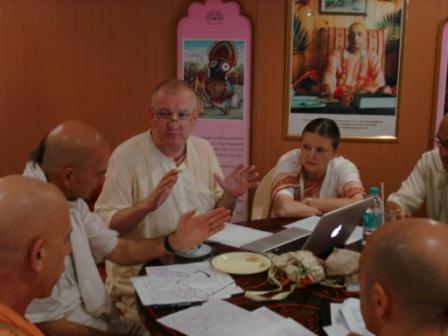
It is the mandate of the GBC Strategic Planning Team (SPT) to assist the Governing Body Commission in building a better future for ISKCON. In practice this requires solid visionary planning, the establishment of systems for the effective execution of those plans, and support of the GBC’s desire to offer both better leadership and clearer global coordination based on sound organizational principles.
One area that caught the SPT’s attention is the way GBC zones are assigned – especially when it involves GBC Zonal Secretaries having to span three or four continents. The current system is strikingly different from the simple, straightforward zonal setup characteristic of ISKCON’s early days, when Srila Prabhupada was with us.
Why does this matter? Because the current model stretches our GBC Zonal Secretaries too thin, costs too much in travel (and the health of those who have to do the traveling), and doesn’t afford the opportunity for GBC Zonal Secretaries to spend quality time in each part of their zones.
To help probe the GBC’s feelings on this matter, in April 2008 the SPT surveyed GBC members. Among the questions we asked GBC members to respond to the statement: “A good percentage of the existing GBC zones present ‘anomalies’ in regard to size (extremely large numbers of temples and devotees), geographical considerations (lack of contiguity and/or requiring huge travel distances), and lack of quality time possible spent by the GBC Secretary on each of the zone’s projects. Therefore the issue of zonal assignments should be carefully discussed and reviewed by the GBC, with the aim of optimizing zonal supervision and effectiveness.”
A large majority of GBC members agreed that the matter should at least be discussed. One of the members, eager to see change, wrote, “I strongly agree. It’s a mess that’s been developing in a random way for thirty years.” Of course, the anomalous situations have often been exacerbated by the urgent need to replace GBC leadership in zones where leadership suddenly failed or, in some cases, where previous leaders have unexpectedly left this world. Another survey respondent wrote: “We need zones that can survive and transcend an individual and that have their own sustainable logic.”
This comment encapsulates the direction the GBC has decided to take in a move from a person-based to a zone-based approach. A zone-based approach facilitates the freedom to design zones according to objective parameters – zones that can, in theory, be supervised by any member of the GBC and are not overly tied to the management of only one or two persons.
Srila Prabhupada encouraged this approach during a GBC meeting in Los Angeles on May 25, 1972, “So, fix up the zone . . . take this map. First of all find out the zone, what will be the zone. . . . First of all make up zone. . . . First of all divide the whole world. It doesn’t matter who goes where.”
And so, with the SPT’s help, the GBC has taken it upon itself to identify zones that are both structurally and culturally independent of the persons who supervise them, based on the principles of manageability and internal consistency while remaining sensitive to existing relationships GBC members have with their current temples. This does not, of course, negate the need to properly match individual Zonal Secretaries with particular zones, to train them properly, and to understand that their empowerment will affect the success of the zones they are managing.
In the latter part of 2008 the SPT was instrumental in encouraging the GBC to establish an Organizational Development Committee (Org Dev). This discussion on zonal configuration fit naturally within the Committee’s agenda. At the October 2009 GBC meetings in Juhu, Org Dev divided all attendees – GBC members and other participants – according to the areas of the world in which they were most active. Org Dev members then handed out maps of the continents and asked these devotees to divide them into zones according to the following definition of a zone: an area that can be realistically and effectively supervised and visited regularly, with the Zonal Secretary spending sufficient time to properly monitor and support the projects and zonal development. And we added, “The Secretary caring for a particular zone is not required to be a member of the global GBC.”
Here are the guidelines Org Dev offered to the meeting’s participants:
1. For this exercise, zones are to be conceived of independent of those who might be currently managing them – zonal secretaries, temple presidents, or whoever else. (Zones are not supposed to be centered around a particular person). Please note: there is no intention to abruptly modify the responsibilities of any of the present GBC Zonal Secretaries.
2. Consider current ISKCON presence and activities (total number of devotees, temples, centers, communities, etc.).
3. Keep in mind the existing GBC resolution from 1975 that states that “based on the recommendation of Srila Prabhupada GBC members should have jurisdiction over no more than about 6 temples.”
4. Consider geography (contiguity, distance, travel realities).
5. Consider language.
6. Consider local culture (religion, history, etc.).
7. Consider potential for spiritual propagation in the zone (does it warrant increased GBC focus?)
8. Consider the size of the local population.
9. Consider that the zones being identified are intended, ideally, for current implementation.
10. Consider that it might be better to designate more zones and smaller zones (and have a GBC member already serving there supervise four of five of these small zones). Consider that designing larger zones may require further subdivision in a few years.
11. Visualize what you are doing in this exercise is something like establishing dioceses (“administrative territorial units administered by bishops”).
Some of the groups made more progress than others, partly because there was more representation for some continents at the meeting and partly because for some continents the discussion to form more rational zones had already begun. But the meeting was an important step forward in helping everyone begin to think about the zonal configuration process.
After the exercise some GBC members continued to work on zonal configuration with their national and continental councils. This was followed by more discussion on the topic at the 2010 and 2011 GBC meetings. Then in October 2011, again in Juhu, Org Dev submitted two proposals that became GBC resolutions – one formally identifying fourteen official “areas” of the world and the other establishing the eight zones the leaders of ISKCON North America – defined as the USA and Canada – had decided on through their own processing. Here are the resolutions:
Resolved, That:
1. To provide a framework to identify zones, fourteen broad territories of the world are hereby identified as Areas.
2. The GBC Zonal Secretaries currently active in those Areas shall submit suggestions for zonal configuration – to the GBC Organizational Development Committee – by the end of June 2012.
3. The suggested zones shall have to be ratified, by vote, by the GBC.
This resolution doesn’t affect or modify existing continental, regional, or national bodies.
The fourteen Areas are:
1. The Indian subcontinent (including Pakistan, Sri Lanka, Bhutan, Nepal, and Bangladesh)
2. The Russian Sphere (Russia, the CIS countries, and Mongolia)
3. Europe
4. The Arab League (North Africa and the Middle East)
5. South Saharan Africa
6. North America (the US and Canada)
7. Mexico and Central America
8. The Caribbean
9. South America (the Spanish-speaking countries)
10. Brazil
11. Japan and Korea
12. China
13. Southeast Asia
14. Australia and Oceania

The second resolution:
Resolved, that:
North America (USA and Canada) shall include eight zones:
1. Canada (whole)
2. Northeast – Maine, New Hampshire, Vermont, Massachusetts, New York, eastern and central Pennsylvania, Rhode Island, Connecticut, New Jersey, Delaware, Maryland, and Washington, DC and three counties in Virginia (Lowden, Prince William, and Fairfax)
3. Southeast – Tennessee, North Carolina, South Carolina, Virginia (except counties surrounding Washington, DC), Mississippi (except New Talavan and surrounding area), Alabama, Georgia, and Florida
4. Great Lakes – West Virginia, western Pennsylvania (including Pittsburg), Ohio, Kentucky, and Michigan
5. Midwest – North Dakota, South Dakota, Nebraska, Kansas, Missouri, Iowa, Minnesota, Wisconsin, Illinois, and Indiana
6. Southwest –New Mexico, Texas, Oklahoma, Arkansas, Louisiana, and New Talavan (with surrounding area)
7. Pacific – California, Arizona, Nevada, Utah, Colorado, and Hawaii
8. Northwest – Washington, Oregon, Idaho, Montana, Wyoming, and Alaska

Note: the implementation of the above zones will take place gradually.
North America has taken the lead (just as it did at the beginning of the movement) in defining manageable zones. Now only thirteen areas of the world to go! These steps – the identification of fourteen areas and the fixing of the desired zones for the USA and Canada – are the beginning of what represents a forward movement in how the GBC serves the world in its essential role of providing supervision and guidance.
As the rest of the world’s areas are also remapped, it will gradually lead to a conceptual realignment with Srila Prabhupada’s vision of adding zones as the movement expands and becomes established in new places: “Divide the whole world into twelve parts. That is first. . . . I want to divide it in twelve zones. And we have to make more propaganda throughout the whole world. Now if you think that the world is so big, twelve members are insufficient, then you can increase more than that and make the zone similarly divided. It is world affair after all. . . . So we shall increase. You can increase the number. So according to vacant position, how many, it may be fifteen? . . . Then you have to reorganize the zones, fifteen zones.” (Conversation with GBC members, Los Angeles, May 25, 1972)
Reorganizing the zones is one of the needs of the hour. Why is it so crucial? Because we have to move away from our current organizational model where we pile more and more responsibility on already over-engaged GBC Zonal Secretaries.
The process of zonal configuration is also revealing clearly the need for more zonal representatives, compelling the GBC to consider related issues, such as how many members should make up the global GBC body, what title to give those who serve as zonal supervisors who are not serving on the global GBC, and issues of geographical representation on the body.
Srila Prabhupada wanted the zones to be managed effectively; he didn’t approve of overwhelming and unrealistic assignments. With these new resolutions the GBC is moving toward designing zones that can optimize care for devotees and spread Krsna consciousness more efficiently. Aniruddha Prabhu, Melbourne Temple President, GBC Deputy, and SPT member, said: “In my mind this zonal reconfiguration work is one of the most important efforts because it will ensure a greater GBC presence in ISKCON. When ISKCON is better managed by dint of the fact that there is more oversight and supervision, then the GBC’s relevance will be enhanced manifold . . . This has the potential to have more impact than any other initiative we are considering.”






